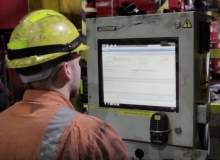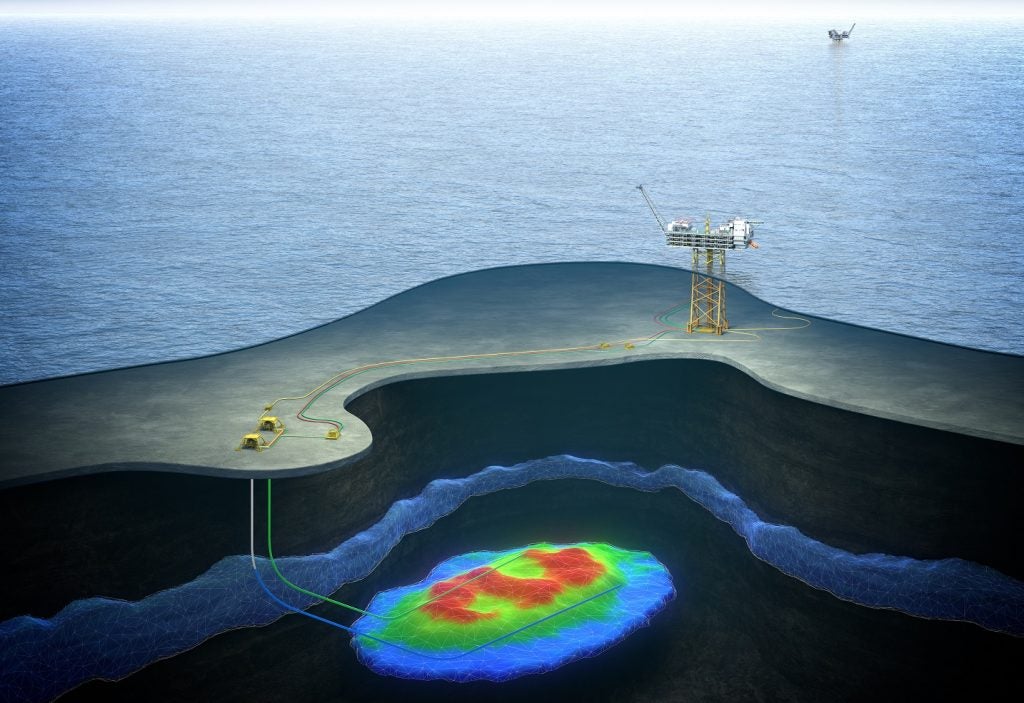

From predictive maintenance and smart asset management to automation and real-time production optimisation, there is a host of IT-based innovations that have the potential to make life easier for offshore projects, especially as companies continue to struggle against the prevailing conditions of today’s low oil prices, depressed demand and increasingly complex deepwater operations.
As the industry’s drive for efficiency continues to fuel demand for innovative, networked offshore systems, IT companies have become an increasingly important resource for consultation and coherent technology implementation. A prime example is Greater Manchester-based SRO Solutions, which specialises in asset management and data replication using the IBM Maximo system.
The company formed in 2004 with an initial focus on the maritime industry, but quickly expanded to incorporate IT development work for offshore oil and gas. One of its first clients was BG Group, which was looking for offshore data replication for a project in the Caribbean; since then the company has expanded its oil and gas client list to include major players such as BP, Chevron and PetroVietnam.
We sat down with SRO Solutions managing director Steve Driver to discuss major IT trends in offshore oil and gas.
See Also:
Chris Lo: In your experience, what has been the relationship between the oil and gas sector and new IT innovations? It’s known as an industry with a cautious attitude to new technologies…
SD: Cautious is the right word, but that’s because of the nature of the business. Safety is so paramount that small changes can make a big impact, and I think that’s always been in the back of people’s minds. But there have also been practical reasons and technical reasons that have prevented some of the development from taking place, with regards to connectivity in particular, because the nature of the business dictates that these companies are operating in locations where connectivity isn’t that good. And yet all the development of IT solutions – hardware and software – has been on the assumption that you’ve got connectivity. So that has always been a challenge.
How well do you really know your competitors?
Access the most comprehensive Company Profiles on the market, powered by GlobalData. Save hours of research. Gain competitive edge.

Thank you!
Your download email will arrive shortly
Not ready to buy yet? Download a free sample
We are confident about the unique quality of our Company Profiles. However, we want you to make the most beneficial decision for your business, so we offer a free sample that you can download by submitting the below form
By GlobalDataCL: Do you think providing tangible value or cost savings to an offshore operation is key to getting offshore operators onboard with new systems?
SD: Definitely, especially nowadays. Everything doesn’t stop because the oil price has dropped, but things slow down and the focus changes. So there are a lot of changes taking place with regards to what people are doing offshore, and perhaps there aren’t as many people offshore at the moment because of the reduction in the need for oil and gas. But equally, it’s quite a good time for companies to look at what they can do to improve, because quite often when the oil price is high and everybody’s so busy, they don’t have time to actually concentrate on improvements and investments in technology because, in layman’s terms, the money’s coming in regardless. Now there’s a different focus because every dollar counts. It’s a good time to take a look at what perhaps can be done, not just now but to be more efficient when things turn around, which undoubtedly they will do, as they always have.
CL: What effect can data analytics have on the way offshore companies manage their assets?
SD: It can have a big impact. I think it’s fair to say that pretty much every major oil and gas operator will have some kind of asset management, some kind of system out there through which they’ve been planning their maintenance, making sure they’ve got spares onboard and perhaps helping with resource management. But what’s changed now is the development of these systems, like Maximo, where the software vendors have invested a lot of money to enable those systems to help connect lots of different systems and assets, and then, most importantly, to start to actually do something with that data. I think that’s the key now, that people have at last recognised that it’s possible to do something with that data, and technology has also enabled the hardware, whether it be a pump or a piece of IT hardware, to produce that data and send it to something that can then read it and do something with it and compare it with other systems on the same rig or across different rigs.
CL: In your work, what trends have you noticed in terms of how offshore oil and gas companies prefer to implement new IT systems?
SD: Marine and offshore companies have a tremendous obstacle to overcome when it comes to rolling out new systems, in that it’s not just putting the system aboard one vessel in one location; it’s multiple vessels in multiple locations, and they’re all moving around at the same time. So the common-sense approach is what’s good for 10% of the fleet will be good for the rest of it, but let’s get that right first before we roll it out to the remainder of the fleet. In some cases with the larger operators, if it’s good for ten it’s got to be good for 150 vessels or rigs. There’s a scale that they’re working in, and then the added challenge, of course, is that the people onboard these assets move as well because they don’t stay on there all the time, and they don’t always go back to the same vessel. Change management is a large challenge as well.
CL: What kinds of systems are proving particularly popular in the industry?
SD: If you think about mapping, GIS [geographic information system] technology, now companies not only want to know that something’s on board a rig, they want to know exactly where it is and they want to be able to see it now in a 3D model. That’s a technology that has become fairly common practice now, and if anybody’s going to build a new FPSO [floating production, storage and offloading vessel] or a new rig, then they want the 3D model that comes with it.
The asset management systems, certainly for the larger players, will typically work alongside those systems and integrate with them. An example could be if someone raises a work order that requires a permit to work, they can actually look to see if there are any work orders on the 3D model for that same location. Maybe the permit’s already raised for that location, or we don’t want welders working where there might be water, that sort of thing. That’s one area which I think has become much more widely used now. It’s pretty common practice.
CL: Do you think many oil and gas companies are struggling to implement these big industrial internet innovations in a coherent way that makes the best use of them?
SD: Yeah, because I think everybody’s aware of the buzz-words now, but then everybody’s equally unsure about what we’re going to do with it and how we’re going to use it. What level of information do different people in the organisations need to see, and how are we going to get that to them? With the clever software systems now, you are able to configure those systems so that as long as you’ve got a unique log-in, you’re going to see what’s been decided that you should see, and that goes from the CEO down to the people onboard the rigs – they’ll just see the information that’s relevant to their position. That’s a great improvement from people logging into a system and trying to find what they were supposed to be doing, and needing five days or more of training to be taught how to find the information they need to work with.
CL: What do you predict the IT landscape will look like in offshore oil and gas in ten or 20 years?
SD: Communication will get better; the connection with the offshore assets will get faster and wider. But the analogy I use is it’s a bit like the M25 – it could be three lanes or four lanes or five lanes, but there are still traffic jams every morning. The more bandwidth, the more data usage, and you’ve still got the same restrictions. So regardless of how big the pipe is, what’s important is how clever the technology is that can actually use that restricted bandwidth, and how it can get the data from A to B, with regards to replication and data migration tools like we use at SRO.
CL: So companies are always going to have to be selective about the data they prioritise?
SD: Yeah, that’s right. Cost will not be so much of a concern as it perhaps used to be when people paid by the minute. But it’s still about prioritising and being able to manage that data and ensure that the right data gets to the right place at the right time. Because otherwise, some of the other technology improvements, whereby we’re collecting all this data and being able to do much more predictive maintenance and much more predictive analysis of the equipment, will be wasted because the people who are analysing that data generally won’t be on the rig; they’ll be somewhere centrally located analysing data from rigs all around the globe.
The other area is a bit of an old buzz-word now, but everybody’s talking about cloud. It is a big change but it’s not such a big thing in a way; it’s just a server located somewhere and it depends where that data centre is and how it’s managed. But of course, the rigs themselves are perhaps never going to be able to use public clouds because of the connectivity, but the VSAT [very small aperture terminal] providers of the world may start to look at providing cloud services for rigs and ships, although I think that’s still some way down the line because of the cost and the amount of data that they’re going to be shipping.
There’s mobile that you’ve got consider as well. What we find now, regardless of the industry we’re working in, is everybody expects that with every system they want to implement, that it’s ‘mobilised’ and will work on an iPhone or a Samsung…it doesn’t matter what the operating system is, they expect that. So app design and development is improving dramatically.




